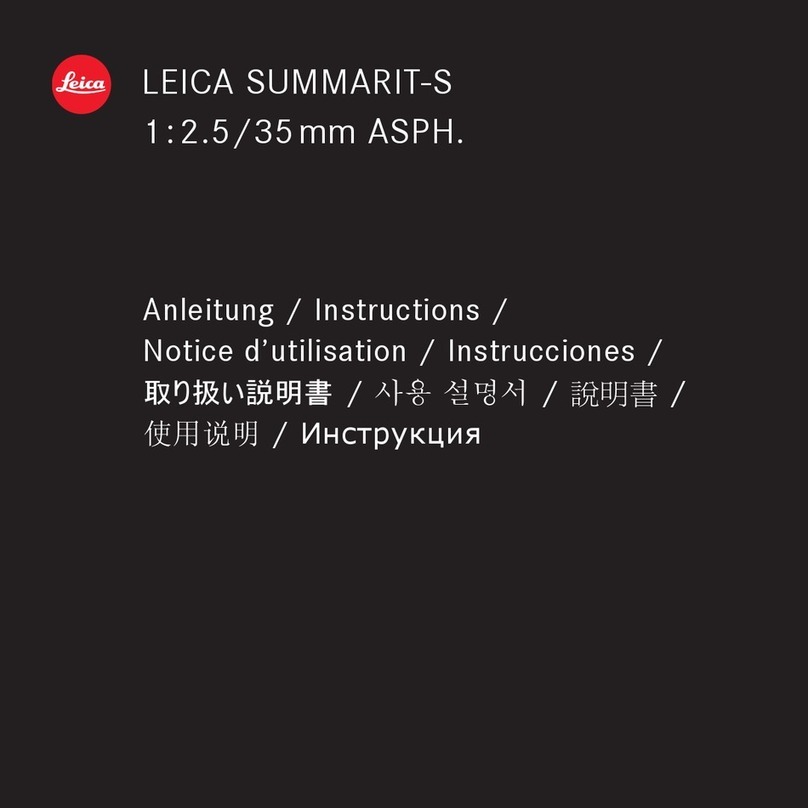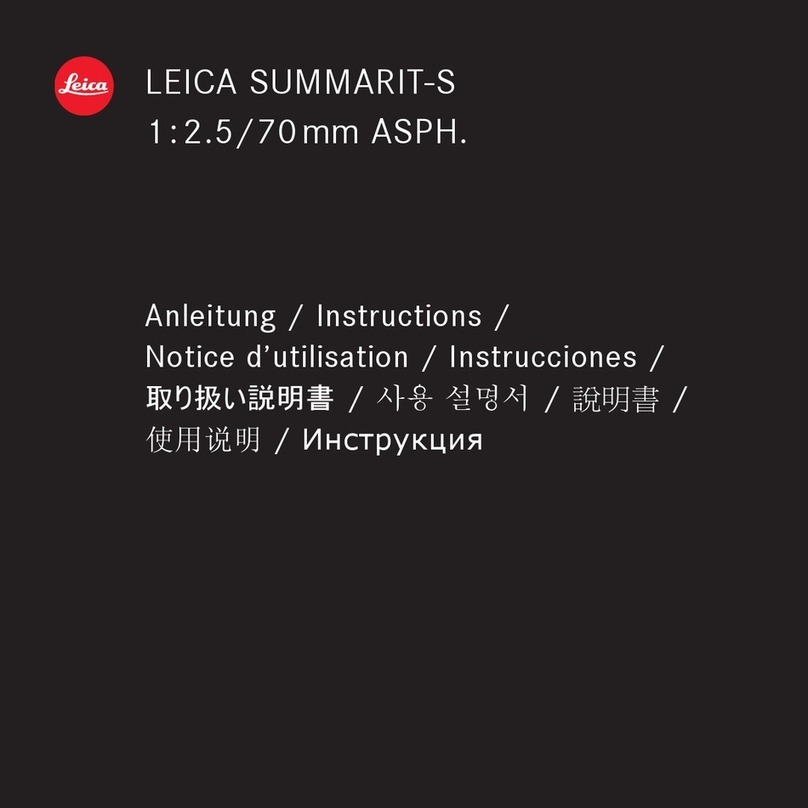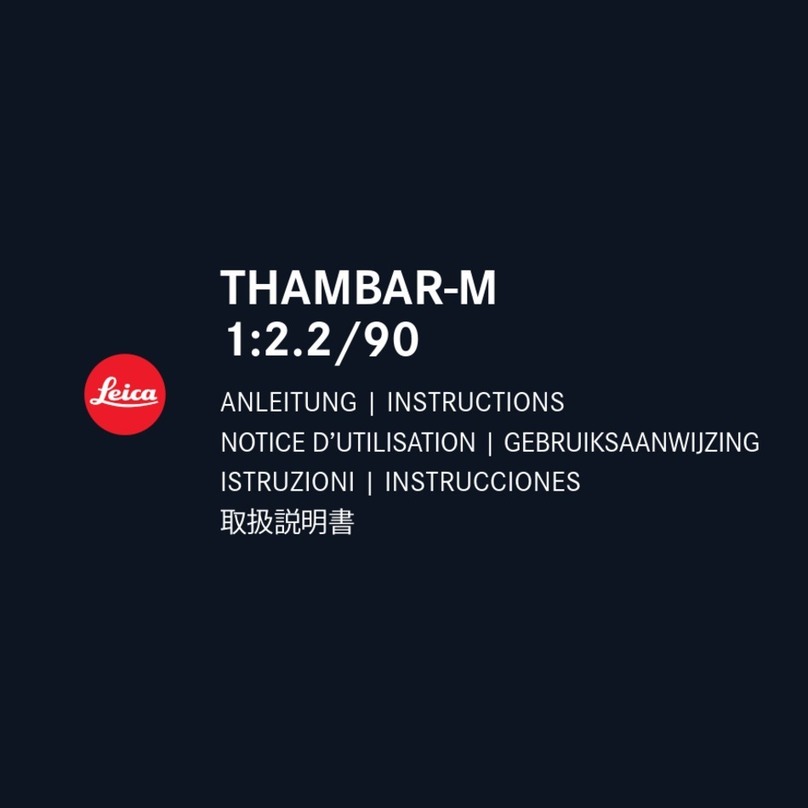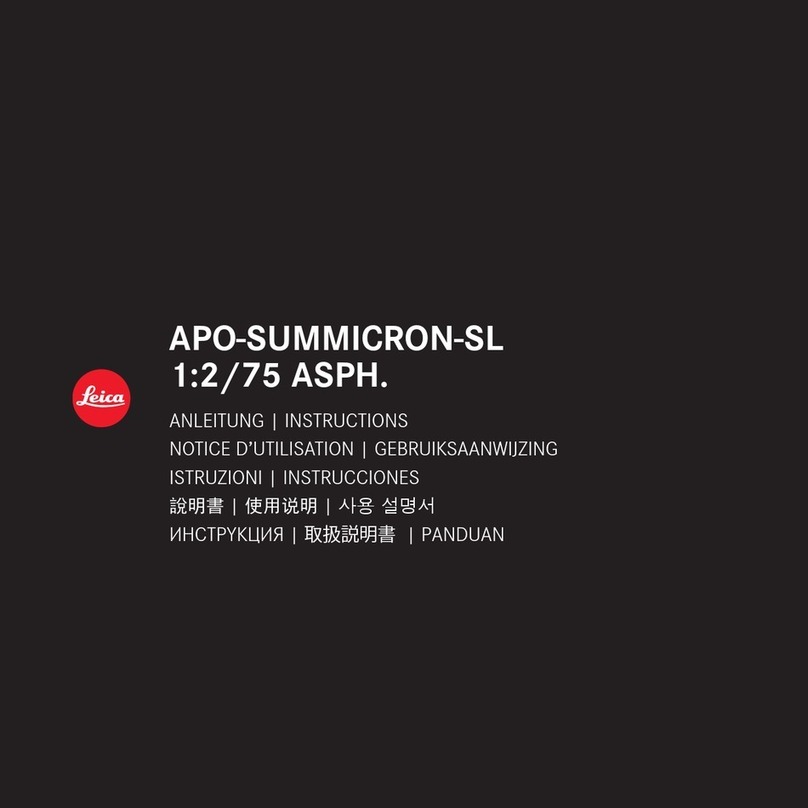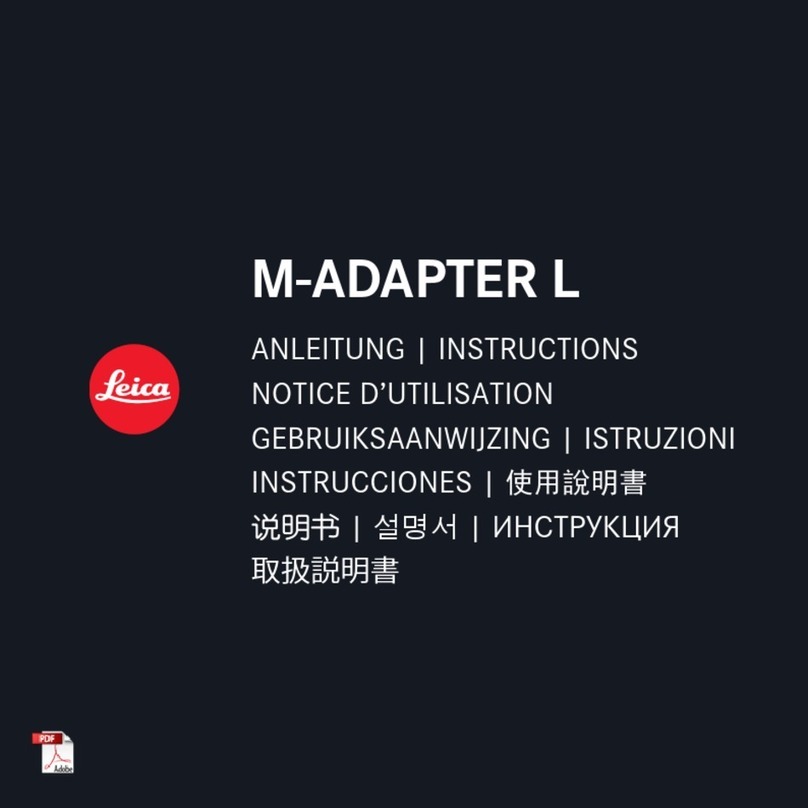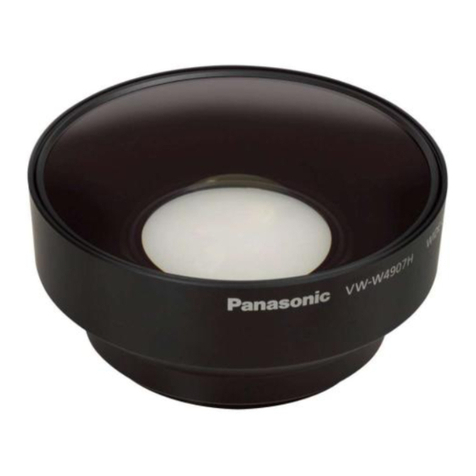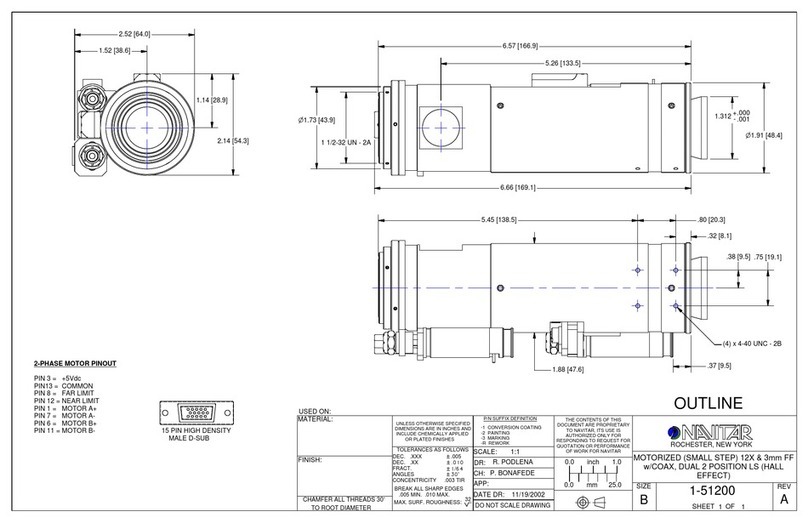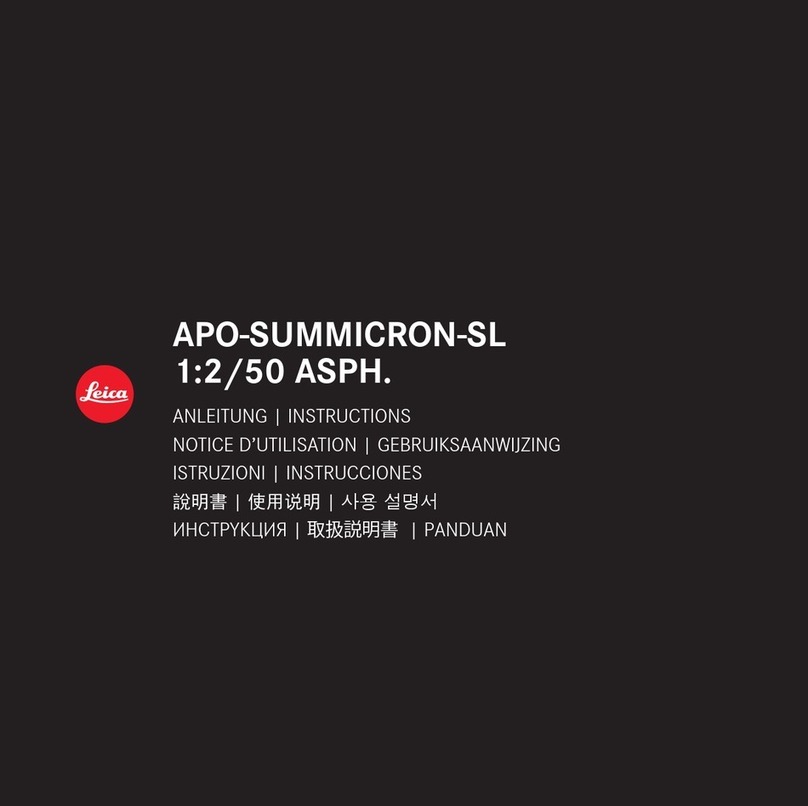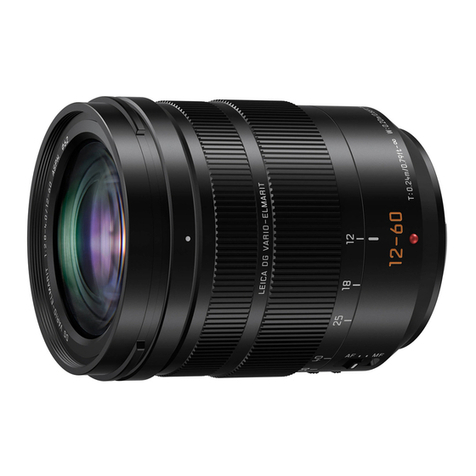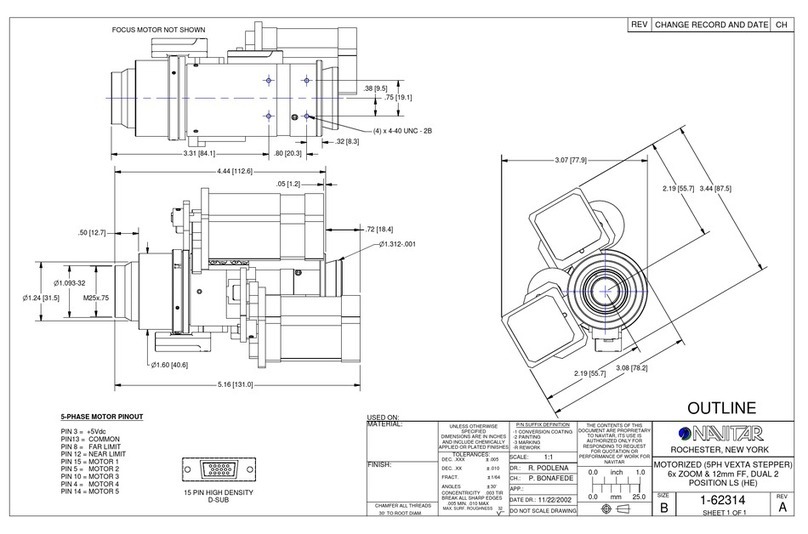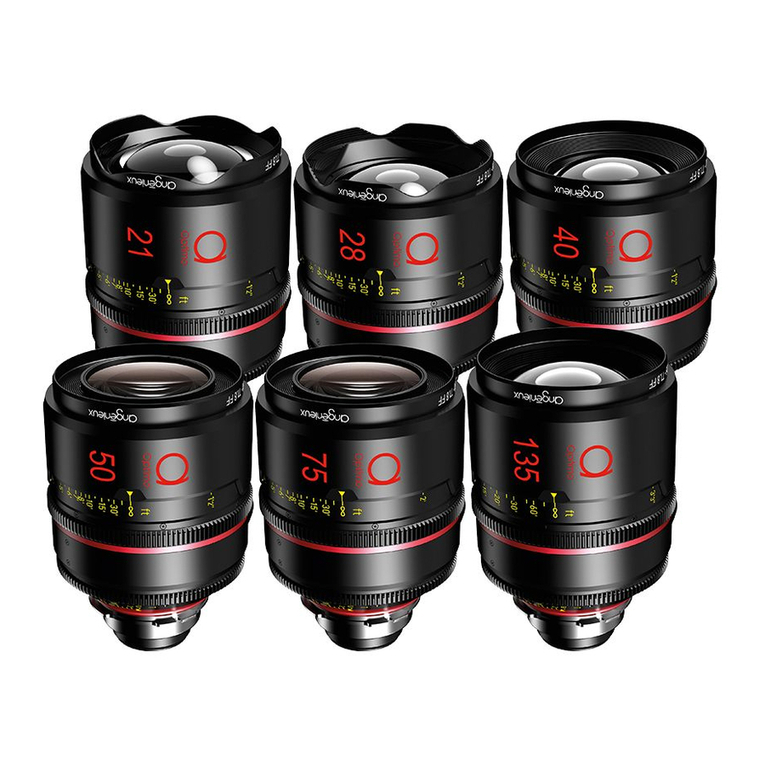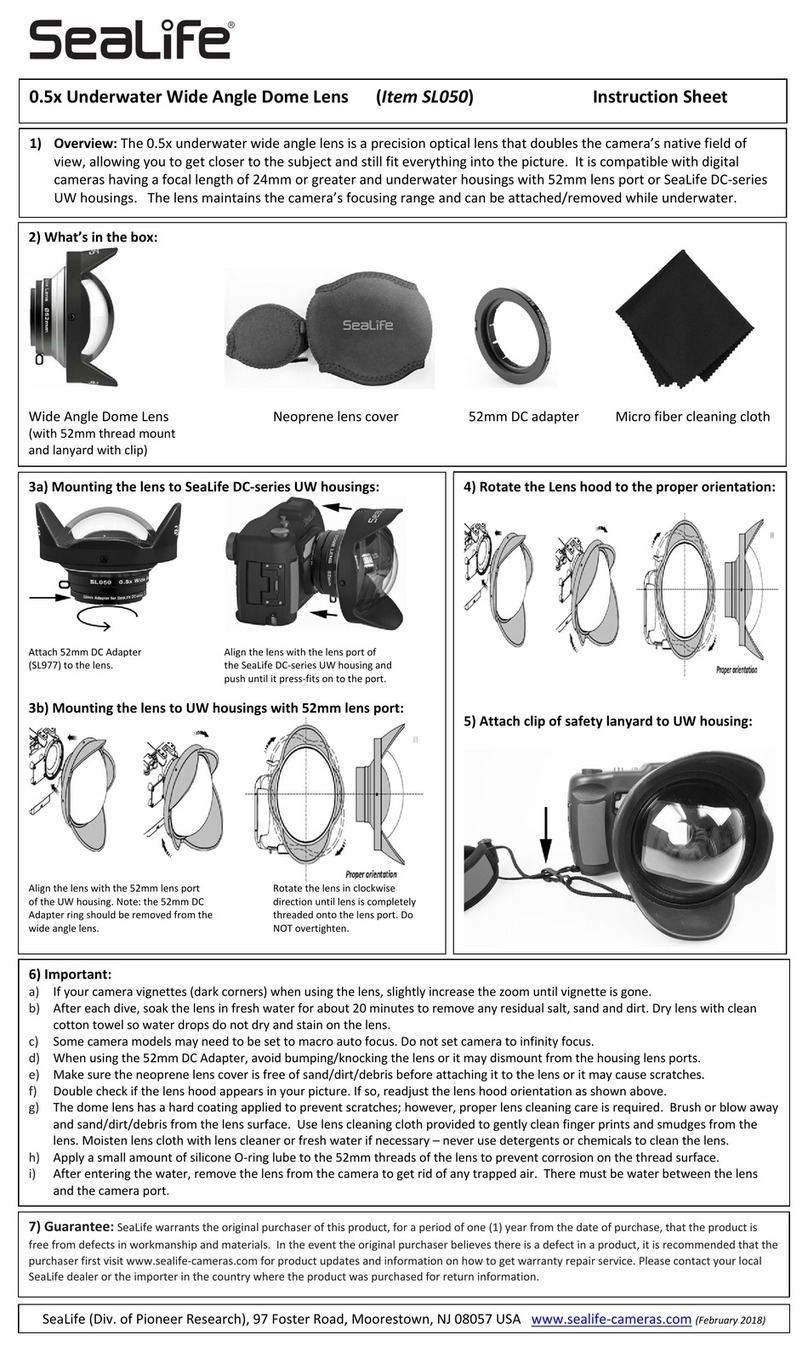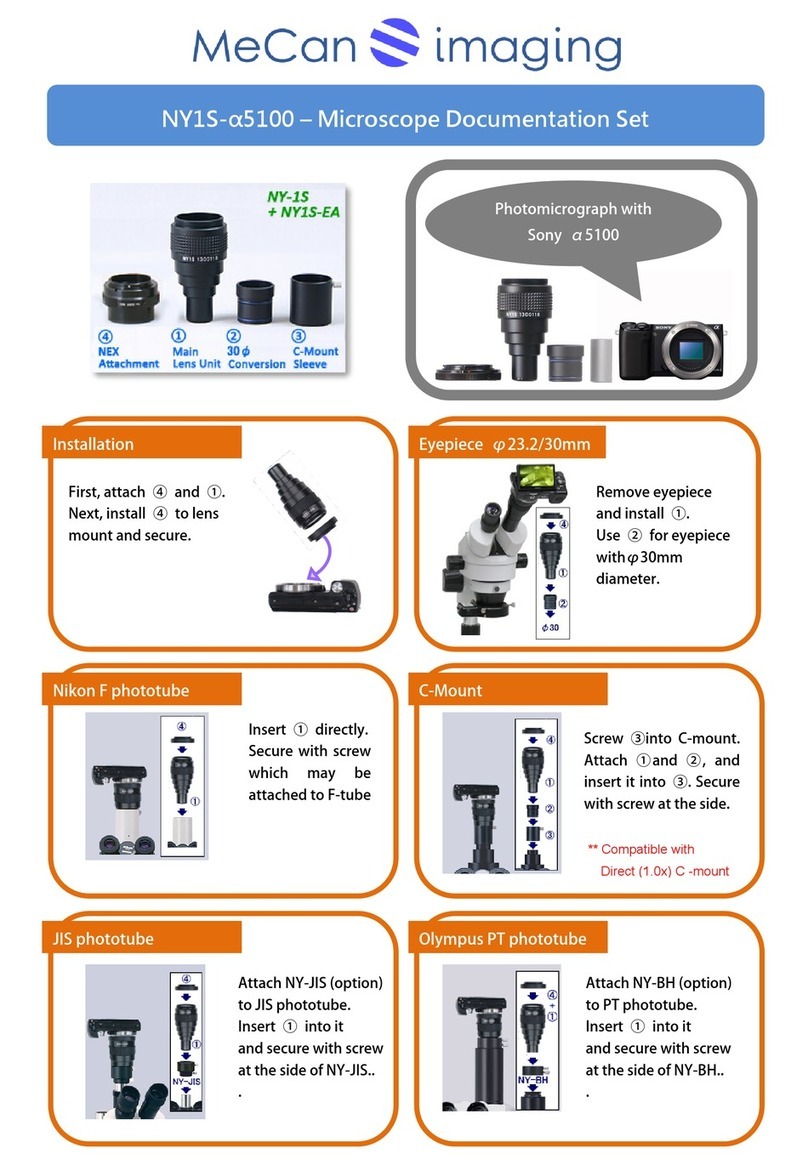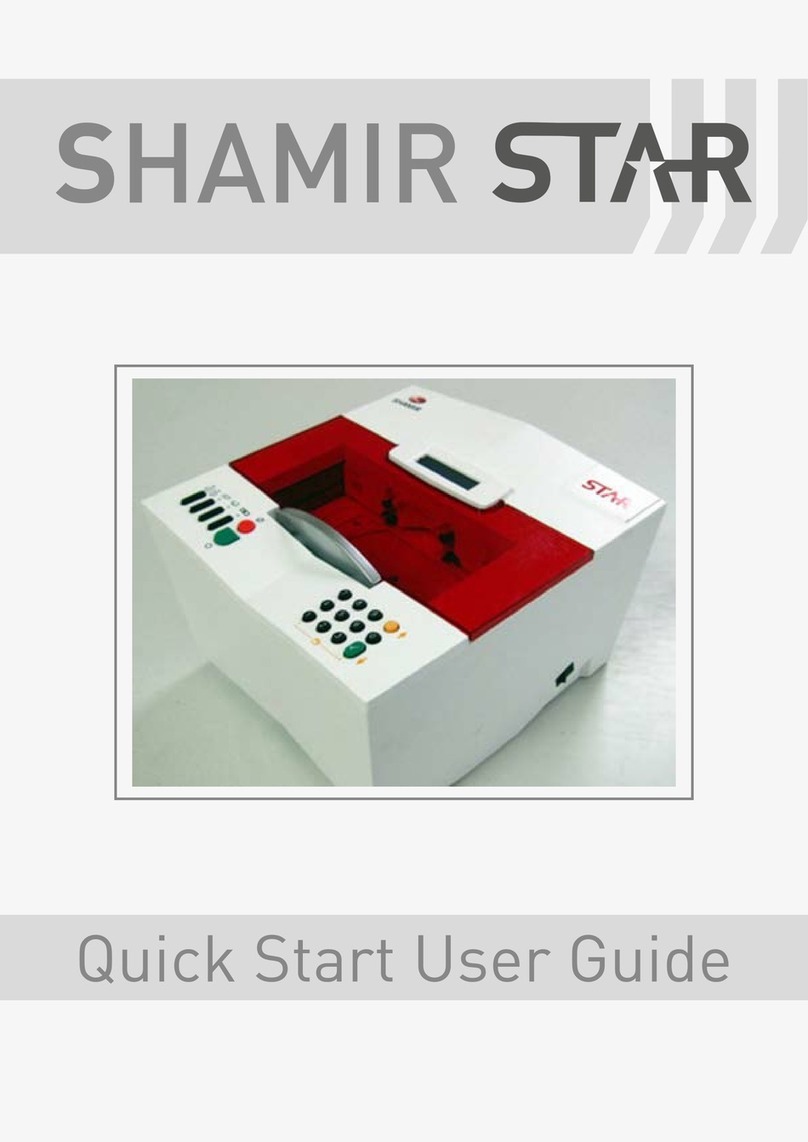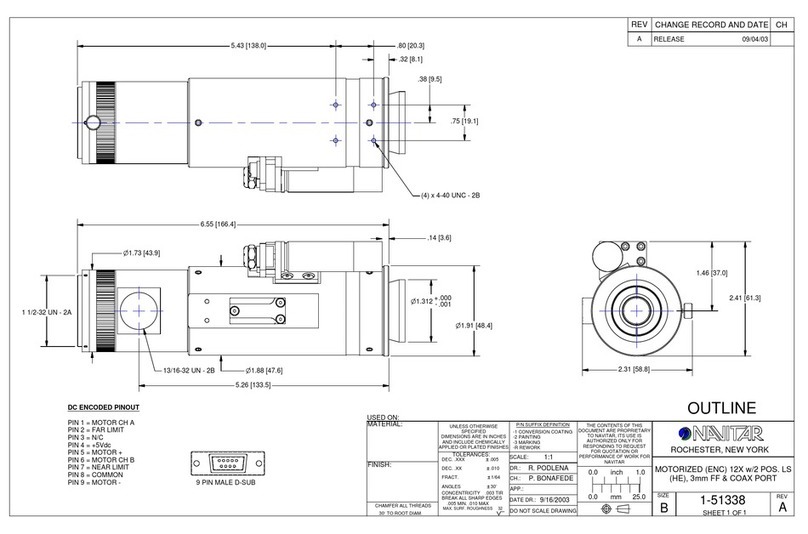
BESONDERE EIGENSCHAFTEN
Das Leica Apo-Elmar-S 1:3.5/180mm ist ein Objektiv für das Leica S-Spiegelreex system.
Durch die Sensorgröße der Leica S-Kameras von 30x45mm entspricht es in der Bildwirkung
einem 144mm-Objektiv in Kleinbild-Systemen.
Das Leica Apo-Elmar-S 1:3.5/180mm zeichnet sich durch seine relativ zum Format hohe
Lichtstärke aus. Bereits bei oener Blende, über das gesamte Bildfeld und im gesamten Ein-
stellbereich zeigt es höchste Kontrastwiedergabe und Auösung. Die Abbildungsleistungen
liegen dabei auf einem so hohen Niveau, dass Abblenden keine nennenswerte Steigerung
ergibt. Das Objektiv zeigt nur sehr geringe Farblängs- und Farbvergrößerungsfehler, und das
sekundäre Spektrum ist – entsprechend des „APO“ in seiner Bezeichnung – sehr gut korri-
giert. Abbildungsfehler wie Bildfeldwölbung, Astigmatismus und Koma sind praktisch nicht
vorhanden.
Die jedem optischen System eigene Vignettierung beträgt hier maximal 1 Blendenstufe, sie
fällt somit in der praktischen Fotograe selten auf und wird durch Abblenden weiter verrin-
gert. Die Verzeichnung ist mit 0,64%/1 % (bei unendlich/1,5m) sehr gering und wird damit
im Bild höchsten bei diesbezüglich kritischen Motiven bemerkbar.
Insgesamt 9 Linsen werden zur Erzielung dieser Leistung eingesetzt. Zur Korrektion der Farb-
fehler sind darunter sechs Linsen aus Gläsern mit anomaler Teildispersion, zwei davon in der
Frontgruppe aus Fluorid ähnlichen Gläsern mit besonders geringer Dispersion. Daneben kom-
men zur Minimierung der monochromatischen Bildfehler in drei Linsen Gläser mit sehr hoher
Brechkraft zum Einsatz. Da die Fokussierung durch Verschieben einer Gruppe von drei Linsen
innerhalb der Konstruktion erfolgt, bleibt die Baulänge des Objektivs unverändert.
Fazit: Das Leica Apo-Elmar-S 1:3.5/180mm bietet eine außerordentlich hohe Abbildungslei-
stung, von der Unendlicheinstellung bis zur Naheinstellgrenze, bei Oenblende ebenso wie im
abgeblendeten Zustand. Dies ermöglicht es, die Blende zwecks Bildgestaltung frei zu wählen,
ohne Einbußen bei der Bildqualität befürchten zu müssen. Da die Gewichtsverteilung durch
die Innenfokussierung stets gleich bleibt, ist die Handhabung dieses Teleobjektivs zudem sehr
angenehm.
4
